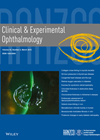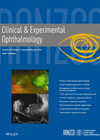JOURNAL REVIEWED: Clinical and Experimental Ophthalmology
Latest Contribution
Twenty-four hour IOP patterns in patients with thyroid eye disease (OO/GL)
Elevated IOP in patients with thyroid eye disease (TED) can be caused by restriction and compression of the globe by enlarged extraocular muscles, elevated episcleral venous pressure and increased mucopolysaccharide deposition in the trabecular meshwork. Although previous studies have investigated...
Choroidal and RNFL thickness in patients with OSAS
In obstructive sleep apnoea syndrome (OSAS), hypoxia secondary to repetitive apnoeic episodes leads to blood pressure variations and haemodynamic changes. There is also intermittent activation of the sympathetic system when the patient is aroused from sleep during apnoeic episodes. OSAS...
Micropulse vs. continuous wave trans scleral diode cyclophotocoagulation in refractory glaucoma
Continuous wave cyclophotocoagulation (CWCPC) delivers continuous high intensity energy to the ciliary body in an attempt to reduce aqueous secretion and hence lower IOP. It is often used as a treatment of last resort due to the potential side-effects of...





